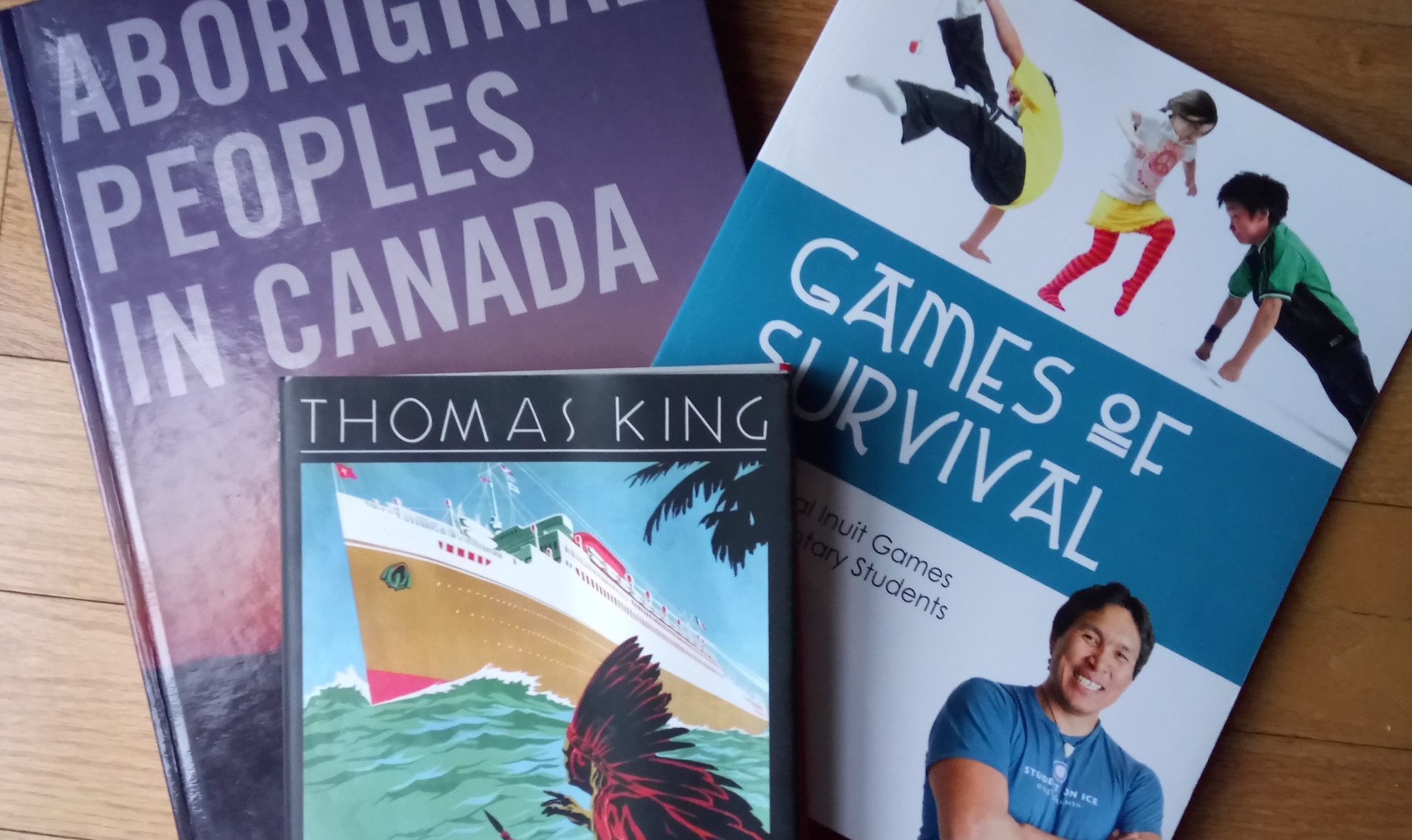I just received Kayak Magazine's We Are All Treaty People issue and I wanted to share it with you as a follow up to my post in May entitled "How do I teach about Treaties?" You can download it here.
Produced by Canada's History Magazine, this issue employed a number of Indigenous authors and artists, and was guest edited by Cynthia Bird (Wabi Benais Mistatim Equay) of Peguis First Nation who works with the Treaty Relations Commission of Manitoba.
It begins by exploring the different understandings of treaty held by First Nations and Settler peoples. It then goes on to explain the different eras of treaty making, beginning with a great description of the Royal Proclamation of 1763. I appreciated the graphic-novel feeling of this issue, and think that many students will relate to its content.
Funding for the project came from the Government of Canada, the Hudson's Bay Company, and TD Bank.
I mention this because, while I appreciate this resource and am excited to share it with you, I do think it contains some limitations that we can think critically about with our students, and which shed light on what types of additional resources we also need to consult.
Here are some limitations/invitations to further research that I found:
(1) The magazine focuses on the relationship between First Nations and Settlers, and includes little to no mention of pre-contact treaties made between Indigenous Nations. I think it is important to learn about pre-contact treaties because they shed light on Indigenous diplomacy and to many Indigenous people, still apply and inform their relationship to each other and the land they were enacted upon.
(2)The early images in the magazine are beautiful, but feel stereotypical to me in that they depict pre-contact Indigenous peoples as indistinguishable from one another, and engaged in simple activities. Contrast that with the first image of a Settler, King George III on page 7, who appears in full royal dress. How can we create a full and complex picture for our students of Indigenous Nations prior to Europeans arriving on Turtle Island?
(3) Finally, I'm concerned that in some places, the text reinforces old narratives and glosses over important details about how the Settlers and later the Canadian government treated First Nations people, including during treaty making.
For instance, consider this summary statement on page 11 about relations prior to 1812
"First Nations were important partners in business and war. They taught the European newcomers how to hunt, fish and survive."
What I feel is missing here is at least some indication of the violence of colonization prior to 1812. I and many educators I know have explored this information with students as young as grade 3/4, with great results.
There is also no mention of the trickery carried out by representatives of the Canadian government during treaty making. Some of this activity is described in Alanis Obomsawin’s documentary Trick or Treaty which focuses on Treaty 9. You can view it for free at the National Film Board website.
I also wondered at this statement on page 13:
"As the bison disappeared due to overhunting and his people began to starve, he (Chief Mistahimaskwa) finally agreed to the Treaty in 1882 and his people settled on reserve land in Saskatchewan."
While I understand space must have been limited, this glosses over the impact the presence of Settlers had made on the Cree, including the introduction of alcohol, disease, and the fur trade, which then precipitated the overhunting and led to starvation. It also oversimplifies the resistance of Chief Mistahimaskwa (Big Bear) and his clashes with the North West Mounted Police.
There is great information in this version of Kayak Magazine, and I hope you will consider using it as one resource about treaties. I also hope you will consider exploring other resources with your students in order to develop their critical thinking about the treaty making process. For more information on this topic, see my post from last May about teaching treaties.
